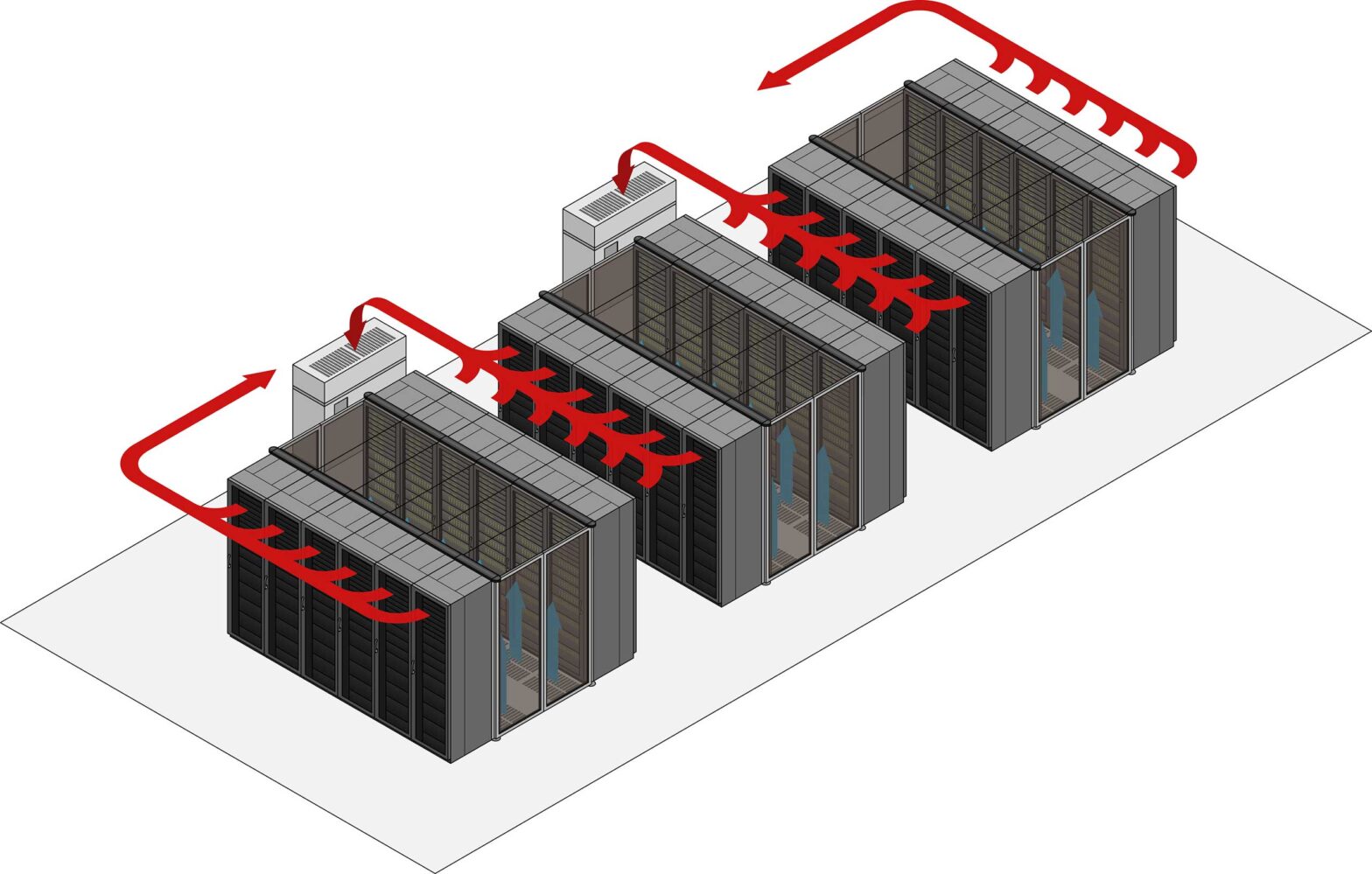When it comes to data centers, energy efficiency is paramount. Not only is it environmentally responsible to manage energy consumption, but it’s also critical from a cost-saving perspective. One major factor in data center energy consumption is cooling. Keeping all those servers at the right temperature is essential for performance and longevity, but it can also be an energy hog if not managed effectively. This brings us to the debate between hot air containment (HAC) and cold air containment (CAC) in data centers. In this blog, we’ll dive into why hot air containment emerges as the superior option.
Clearer Temperature Management
Hot air containment focuses on separating the hot exhaust air from the servers and directing it away from the server intake. This ensures that the servers are only exposed to cooled air, preventing any mixing of hot and cold air. In contrast, cold air containment tries to ensure that only cold air reaches the servers. While the end goal might seem the same (keeping servers cool), HAC provides a more direct method. By containing and managing the hot air directly, there is a clearer pathway for temperature management, which often results in more consistent and predictable temperatures.
Greater Energy Efficiency
Because HAC directly targets and manages the hot air produced by servers, it often requires less energy to achieve the desired temperatures. The hot air is isolated and then either expelled or used in other ways (like pre-heating cold air). This means cooling systems don’t have to work as hard, as they’re not battling a mixture of hot and cold air.
Cold air containment systems, on the other hand, focus on keeping cold air in specific areas. This can sometimes mean that cooling systems have to work harder to maintain those cold temperatures, especially if there’s any leakage or mixing of air.
Versatility in Application
HAC systems can be applied to a variety of data center setups. Whether it’s an aisle containment system or overhead, there are multiple methods available to redirect hot air where it needs to go. This gives data center managers the flexibility to implement the best solution for their specific infrastructure.
Cold air containment can be more restrictive, often requiring more intensive infrastructure changes or setups that might not be ideal for every data center.
Potential for Heat Reuse
One of the intriguing benefits of hot air containment is the potential for heat reuse. Because the hot air is isolated, it can be harnessed and used for other purposes, like heating nearby buildings or pre-heating incoming cold air to reduce the strain on heating systems. This not only provides further energy savings but also introduces the potential for additional revenue streams or community benefits.
Improved Humidity Control
Managing humidity is another critical aspect of data center operations. With hot air containment, since the hot and cold air streams are separated, it’s easier to control humidity levels in the cold aisles. This prevents potential damage to equipment due to moisture and condensation.
Scalability for Future Growth
Data centers are evolving entities. As technology advances and needs grow, data centers will need to scale up their operations. HAC provides a more scalable solution because as more equipment is added, the system can be easily adjusted to handle the increased heat load. This is not always the case with CAC systems, which might need significant overhauls to accommodate growth.
Lower Overall Costs
When you consider the energy savings, potential for heat reuse, reduced wear and tear on cooling equipment, and scalability, hot air containment can lead to significant cost savings over time. While the initial investment might be comparable to or even more than a CAC system, the long-term ROI often favors HAC.
While both hot air containment and cold air containment have their merits, the advantages of HAC are clear. From better energy efficiency to potential revenue streams from heat reuse, hot air containment offers a forward-thinking approach to data center cooling. As data centers continue to play a pivotal role in our digital world, ensuring they operate efficiently and sustainably will become even more crucial. And in that journey, hot air containment will undoubtedly play a leading role.
